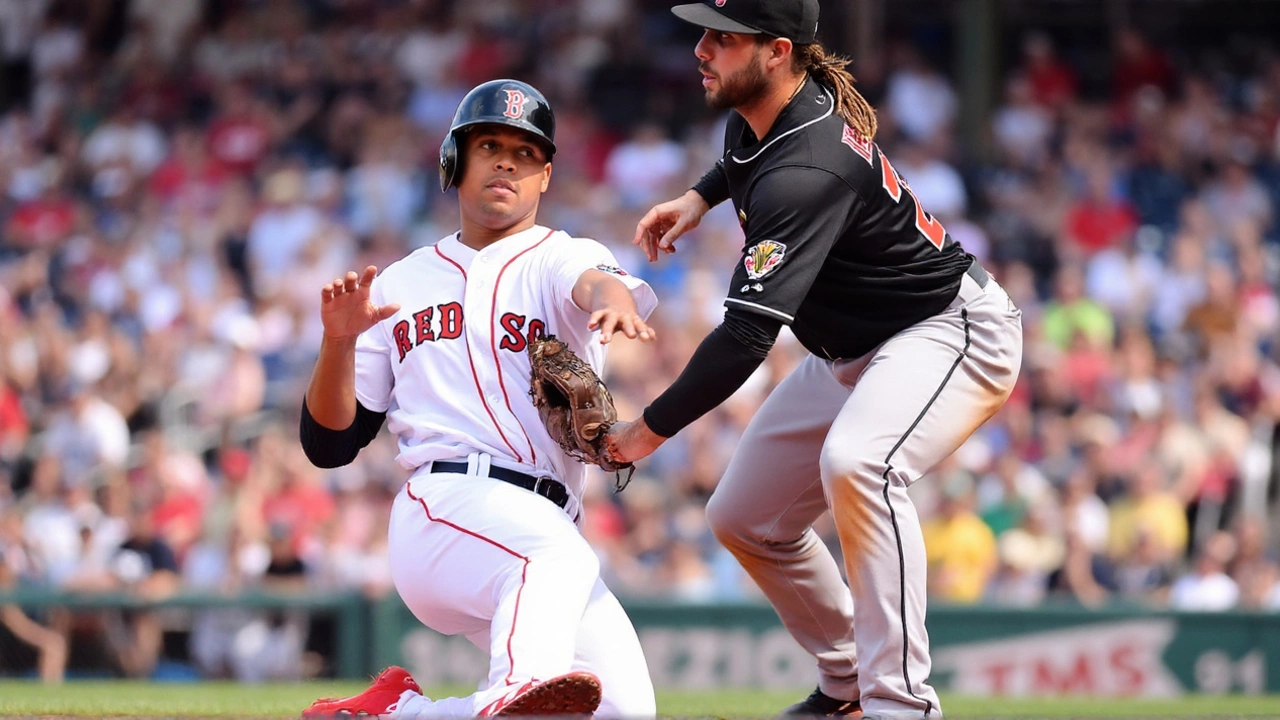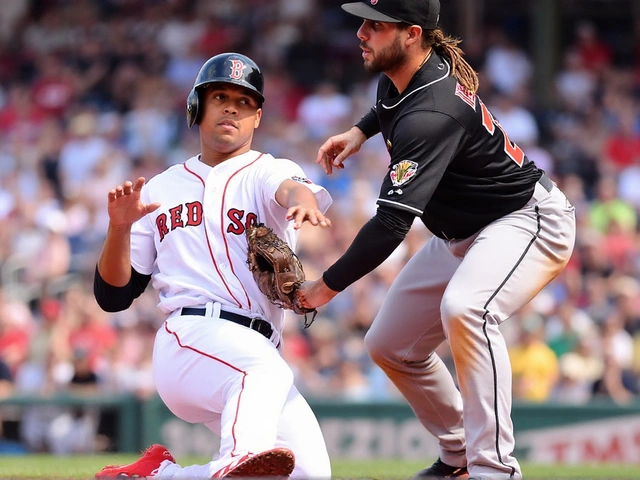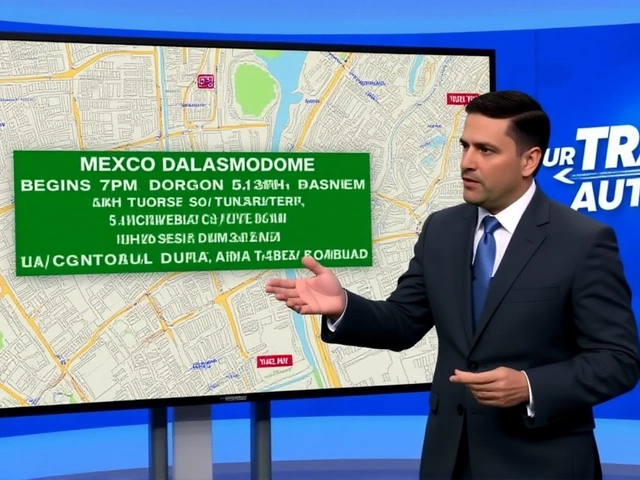Carroll’s milestone turns a late scare into a statement win
When the Boston Red Sox clawed within a run in the eighth inning, the game felt like it was flipping. Then Corbin Carroll flipped it back. The Arizona outfielder launched his 30th home run of the season — a three-run blast to right — to crush the Red Sox rally and lock in a 10-5 win at Chase Field. It was the signature swing on a night packed with big ones from a deep Arizona lineup.
The Arizona Diamondbacks didn’t just win; they showed layers. They scored early, added on in the middle innings, survived a late punch, and answered with a heavier one of their own. Carroll’s milestone came after Geraldo Perdomo punched a single up the middle to score Tyler Locklear for a two-run cushion, and then Carroll blew the game open with that 375-foot shot that also brought home Jorge Barrosa and Perdomo. A one-run nail-biter turned into a five-run cruise in about two minutes.
Arizona set the tone right away. Perdomo opened the scoring in the first with a solo blast to dead center, a 417-footer that jumped off his bat. The Red Sox nudged back early, but the Diamondbacks answered in the second when Jordan Lawlar came home on a wild pitch charged to Boston’s Tolle, pushing Arizona back in front, 2-1. That sequence mattered later: it forced Boston’s starter into higher-stress pitches and set the table for the inning that changed the feel of the game.
The third belonged to Ildemaro Vargas, who pounced on a pitch and sent it 407 feet to left for a three-run homer. He scored Gabriel Moreno and Alexander, turning a tight game into a 5-1 Arizona lead. It was a veteran swing — quiet, quick, and no doubt the instant it left the bat. By the fifth, the Diamondbacks made it 6-1 when Lawlar lifted a clean sacrifice fly to left, bringing in Moreno and moving Alexander to third. Small-ball execution, power production, and pressure on the bases — Arizona blended all of it.
Credit Boston for making it interesting. In the top of the eighth, the Red Sox finally broke through. Alex Bregman ripped a two-run double to left, scoring Jarren Duran and Omar Narváez to cut the lead to 6-3. Christian González followed with a sacrifice fly to bring home Bregman, and Rob Refsnyder knocked a double to center to chase Trevor Story across the plate. In a blink, it was 6-5, and the Red Sox dugout had real life.
That life didn’t last long. In Arizona’s half of the eighth, Locklear reached, Perdomo lined him in, and Carroll closed the door with the swing that everyone in the building knew had the distance the second it left the barrel. The timing stung for Boston: they had just spent so much to get back into the game, only to watch the home team drop five runs with two swings and good situational hitting.
Eduardo Rodriguez did his part to make the late drama possible and then moot. Arizona’s left-hander gave the Diamondbacks six firm innings, spotting his fastball, mixing his changeup, and limiting damage when Boston threatened. He kept the Red Sox from stringing rallies together through the middle frames, which bought Arizona enough time to build the kind of cushion that holds up most nights in this park. He earned the win and, just as important for the series, kept the bullpen reasonably fresh for the weekend.
Arizona’s offense came from everywhere, but Perdomo’s night summed up their approach: impact early, control late. He homered to start it, added a run-scoring single when Boston had pulled within one, and continued to be the table-setter this lineup leans on. He now leads the team with 150 hits on the season while hitting .286 — not flashy, just constant production. Carroll’s 30th homer marks a clean round-number milestone for the club’s power-speed star, the kind of mark that tends to show up in October previews and award conversations.
Vargas’ three-run shot in the third loomed large too. Those are the swings that flip game scripts. Once he cleared the wall, Arizona’s dugout settled, Rodriguez pitched to contact with confidence, and Boston had to chase. When the Red Sox finally did surge, Arizona still had one more card to play.
Boston’s bats weren’t quiet; they were just late. Duran kept pace with a steady year — he’s up to 142 hits and a .260 average — and Story still profiles as the team’s primary run producer with 23 home runs and 88 RBIs. Bregman’s eighth-inning double was the kind of swing that normally changes outcomes. The issue for Boston was the inning that followed. The bullpen matchups out of the break didn’t line up against Arizona’s top-of-the-order speed and contact, and one missed spot to Carroll became the headline.
There was also a small but meaningful difference in situational plays. Lawlar executed in two moments: aggressively scoring on a wild pitch in the second and logging a crisp sacrifice fly in the fifth. Those are one-run decisions that turn into three-run cushions later. Boston’s rally in the eighth produced four runs but asked a lot: a two-base knock, a sac fly, a gapper, and traffic. Arizona answered with a single and a single swing. That’s the gap between a comeback and a counterpunch.
On a night like this, lineup depth mattered. Moreno reached and scored. Alexander was on base for runs in the third and fifth. Barrosa crossed on Carroll’s blast. Locklear scored the go-ahead insurance run. Four different names, four different roles, all telling the same story: Arizona didn’t wait around for one star to carry the load. Carroll finished the job, but the table was set all evening.
For Boston, there are takeaways on sequencing and leverage. The eighth-inning push showed they can get to Arizona’s middle relief, especially if they get early-count swings to the pull side. The next step is preventing the immediate answer. That’s about first-pitch execution after your own offense scores and about avoiding freebies — wild pitches, elevated misses — that set up crooked numbers. The Red Sox did a lot right in one inning, but Arizona did a little bit of everything all night.

What it means for the series — and the next 48 hours at Chase Field
This win gives Arizona a 1-0 lead in the three-game set and a bump to its home record. It also checks a few strategic boxes. Rodriguez handled six full, which eases the load on the back end. Perdomo’s form at the top is intact. Carroll’s power is fully online. And Vargas’ swing adds another wrinkle for opposing scouting reports: you can’t just pitch around the middle if the lower third can do damage.
Boston leaves the opener with both a reason to be annoyed and a reason to believe. The bullpen couldn’t slam the door after the club’s best offensive inning, but the lineup showed it can hit Arizona’s velocity and find gaps. Bregman’s timing looks right. Duran continues to create traffic. Story is still the threat you plan around. That’s a foundation for the rest of the series if they can keep Arizona from running away early again.
No one’s season turns on one game, but the shape of this one matters. Arizona built a lead in three different phases — power at the start, situational execution in the middle, and star punch late. Boston needed a perfect top of the eighth to get back in it and almost got it. One swing short. One pitch too many to Carroll. It happens fast in this ballpark.
As for the numbers everyone will watch: Perdomo’s 150 hits underscore why the Diamondbacks keep him near the top of the card, a steady .286 that sneaks up on you. Carroll’s 30th fits the arc of a player whose bat speed plays in every count. For Boston, Duran’s 142 hits track with the table-setter role he’s carved, and Story’s 23 homers and 88 RBIs keep the lineup anchored.
Both teams turn the page to Game 2 with a few simple priorities. Arizona will want early strikes in the zone and traffic for Carroll and Perdomo. Boston will want cleaner fifth and sixth innings to avoid the slow drip that made the eighth-inning push feel desperate. If the opener is any hint, the next two days will be about who controls the first big swing — and who has the better answer when the other side lands one.






